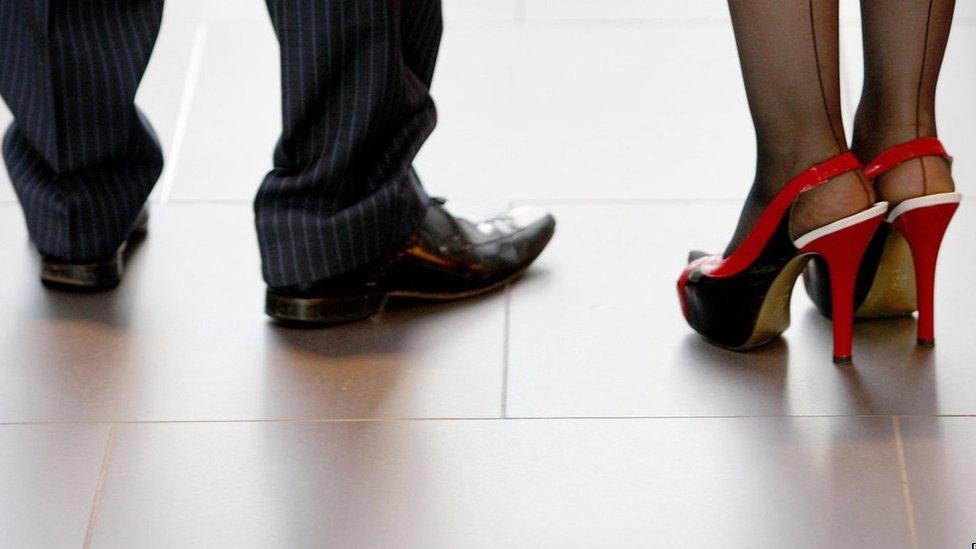Have high heels toppled out of fashion?
- Published
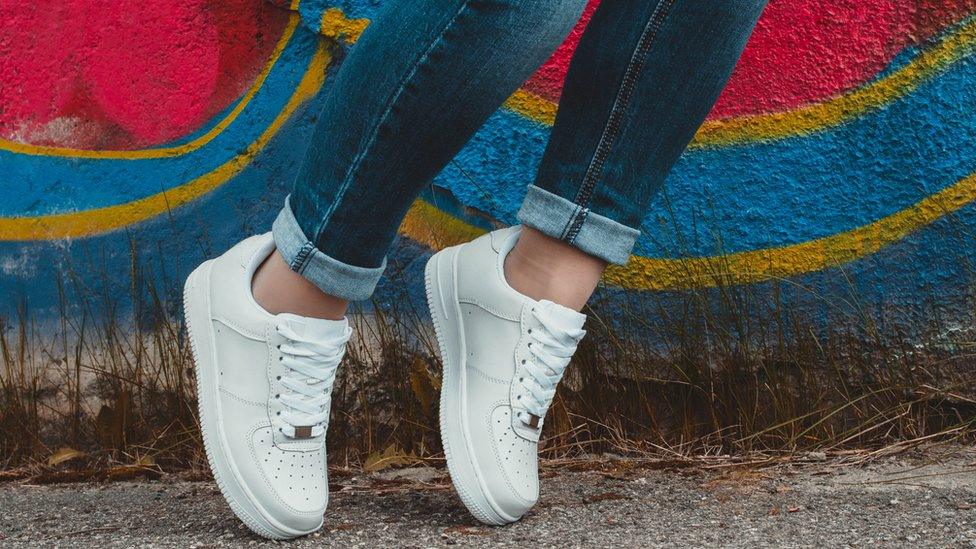
Sports luxe, athleisure and loungewear - the fashion pack have been telling us it's "on trend" for a while.
Footwear is no exception, as Britain's women are kicking off their high heels in favour of comfy trainers and flats.
Even Victoria Beckham has ditched her signature stilettos at work, sweeping into New York Fashion Week in baggy trousers and sandals.
Market research group Mintel says trainers have overtaken heels in popularity, with 37% of women in the UK buying trainers last year, compared to just 33% of women splashing out on high heels.
Though younger women are more likely to wear heels, women of all ages prefer flat shoes - with 51% of shoppers opting for flats.
'The next thing'
Hannah Rochell, fashion and features editor at InStyle Magazine, told BBC Radio 5 live that the move away from heels was a "natural progression".
She says: "I think that for the past few years flats in general have been much more popular with women - they've been on the catwalk, they've been much better designed on the High Street and it's just a natural progression that trainers are going to be the next thing that we want to wear."
Mintel's senior fashion analyst Tamara Sender highlights the "trend for consumers to integrate sports clothing into their daily wardrobes", with data showing that 50% of consumers who bought sports goods in the last 12 months did so for non-sport use.
She told BBC Radio 4's You and Yours programme: "I think we've seen a lot of sportswear brands really pushing sports clothing and footwear aimed at women and more fashion-led sports footwear, and this also all fits into the leisurewear trend we've seen growing in the UK which is driven by increasing consumer interest in health and wellbeing, and so therefore we feel this has more longevity."
According to the Office for National Statistics, sales of footwear and leather goods totalled £4,615m in 2015, up 4.9% on the previous year.
Working it
A debate was sparked earlier this year by city worker Nicola Thorp, who was sent home from work for not wearing high heels.
Parliament is currently considering her petition to make it illegal for companies to require women to wear high heels at work.
At the time, she said: "I was expected to do a nine-hour shift on my feet escorting clients to meeting rooms. I said, 'I just won't be able to do that in heels.'"
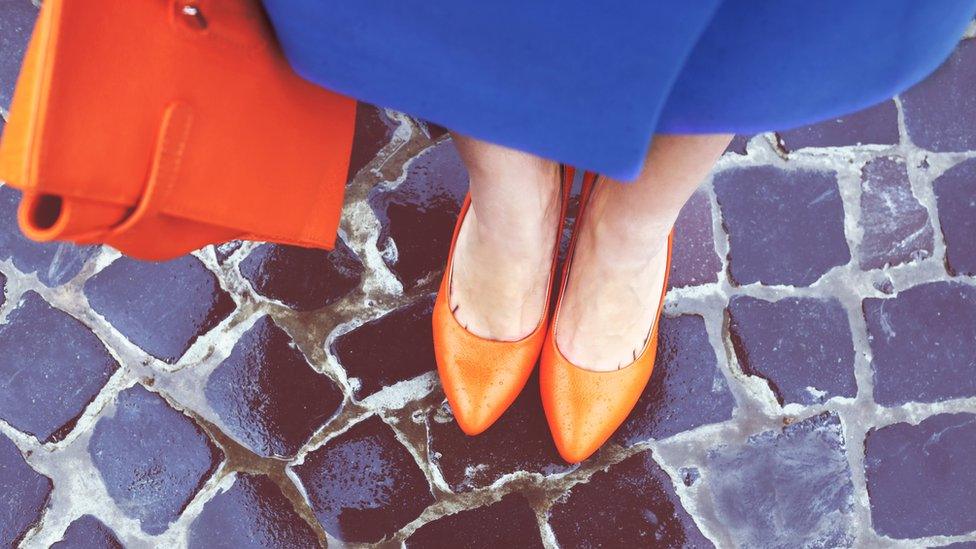
High heels have thin soles which the College of Podiatry says can mean poor cushioning on paved roads
Women can only last around an hour on average in high heels before complaining of foot pain, according to the College of Podiatry.
A fifth of women surveyed by the college said that their feet began to hurt after just 10 minutes' wear.
Comfort zone
Miss Rochell says women in the workplace are increasingly abandoning heels in favour of flats.
She says: "If I just look around me and my office at work - that women two or three years ago would wear heels to work, they just don't wear them anymore."
Indeed, 74% of women surveyed by Mintel said comfort was more important to them than fashion when it came to buying footwear.
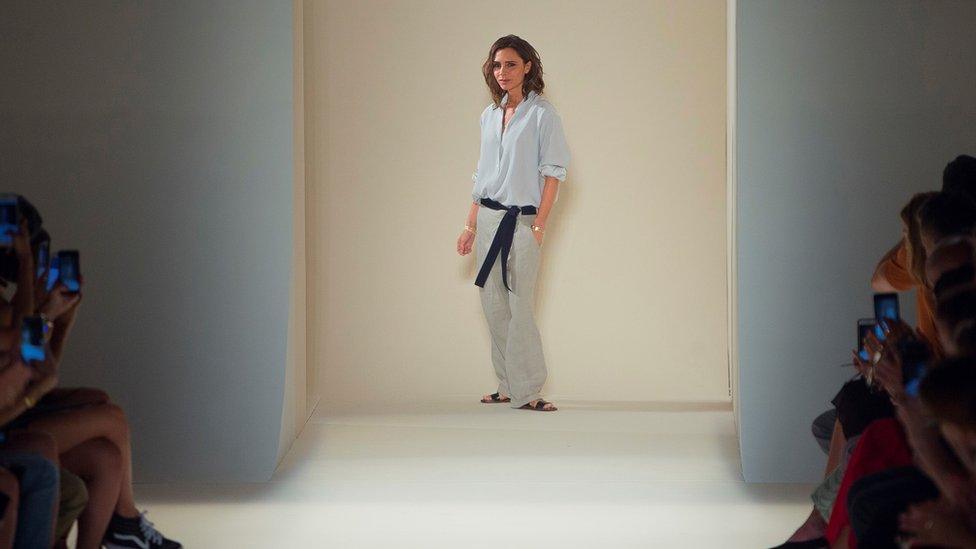
Victoria Beckham opted for baggy trousers and sandals at New York Fashion Week
Miss Rochell says: "The trainer is the ultimate expression of that comfort and that feeling of empowerment.
"For me, I feel far more empowered wearing flat shoes or trainers that I think look great but that also I feel comfortable in and that I can be very practical in - I can run, I can walk around."
Now that women are used to the comfort, Miss Rochell says she doesn't think they will "go back".

Rihanna's collaboration with Puma was "inspired by the concept of Marie Antoinette at the gym"
But eyebrows were raised earlier this year when Victoria Beckham told the Daily Telegraph, external: "I just can't do heels any more". Though she added: "At least not when I'm working."
She is still regularly seen in towering heels out of office hours.
The former Spice Girl is among a string of pop stars who have launched their own fashion lines, with Rihanna unveiling her line Fenty x Puma in Paris on Thursday.
Rihanna, who became the creative director of Puma in December 2014, was said to be inspired by the concept of "Marie Antoinette at the gym".
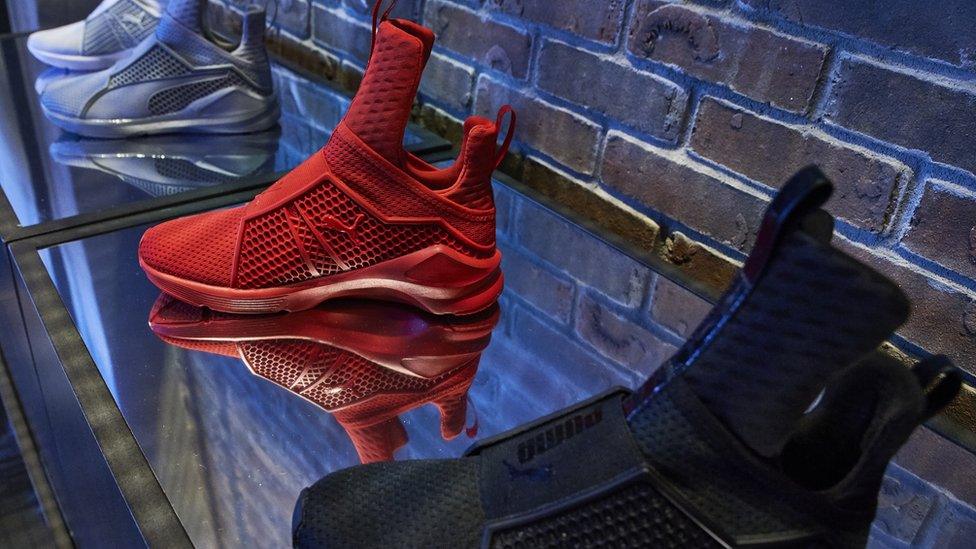
Rihanna has designed a selection of footwear for Puma, displayed in New York earlier this month
But the editor of the fashion blog Glamorous Heels, Martin Deshev, says high heels aren't going anywhere.
"It's just that women finally aren't feeling pressured to wear high heels all the time and everywhere.
"While our blog is dedicated entirely to heels, we've always maintained that women (and men of course) should dress the way they feel their best and not the way someone else tells them how to."
He adds: "So, women are enjoying this freedom and saving their heels for the moments they feel are right for them."
Sandra Hagelstam, who runs the fashion blog 5 Inch and Up, says high heels can have a positive impact on the wearer.
"I think anyone who is comfortable should definitely wear them. It's our power tool and I love how it changes the posture and attitude of a woman - it's our secret weapon."
But she says she also considers the rise of trainers to be positive because it has led to more attractive designs in comfortable footwear and greater choice for the consumer.
The blogger also thinks there should be a greater emphasis on making high-heeled shoes more comfortable.
"That's something not valued highly enough. Nowadays we are powerful women getting a lot done, we are not just sitting around looking beautiful, so the demand for comfortable heels has grown," she adds.
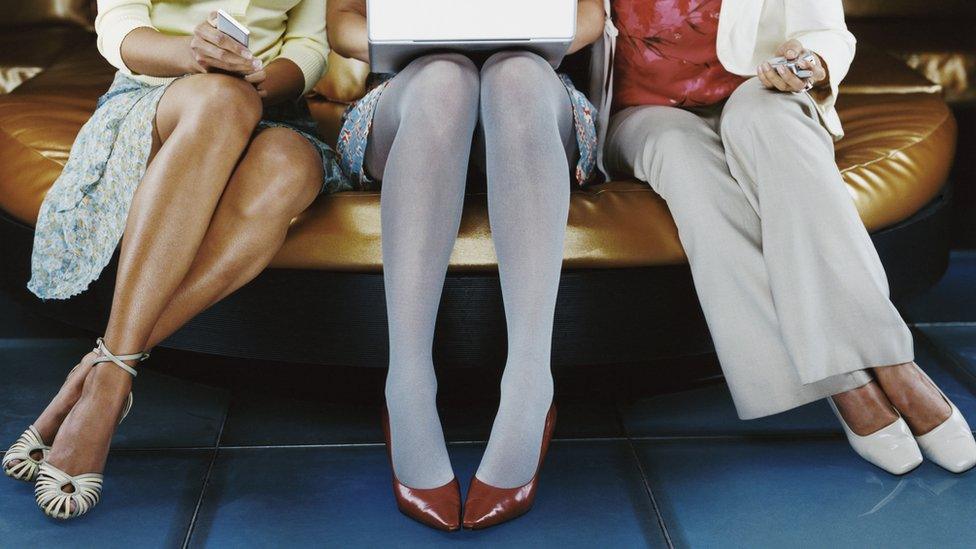
The College of Podiatry says "function not fashion" is coming back into play
There's no avoiding the fact that high heels can be bad for your feet.
Generally, high heels have thin soles - often less than half a centimetre deep - which the College of Podiatry says can mean poor cushioning, especially on irregular surfaces such as cobbled paving.
Matthew Fitzpatrick, consultant podiatrist at the College of Podiatry, advises women to think about how they can best support their feet, adding that choice of footwear is the "obvious question" for anyone with sore feet.
In a 2013 survey of 2,000 women by the college, 90% of respondents reported foot problems - ranging from short-term irritants such as blisters to long-term conditions such as bunions.
Mr Fitzpatrick says: "Although the college is not saying you should never wear high heels, we are keen to promote the appropriate use of footwear for every occasion."
- Published29 September 2016
- Published12 May 2016

- Published11 May 2016
